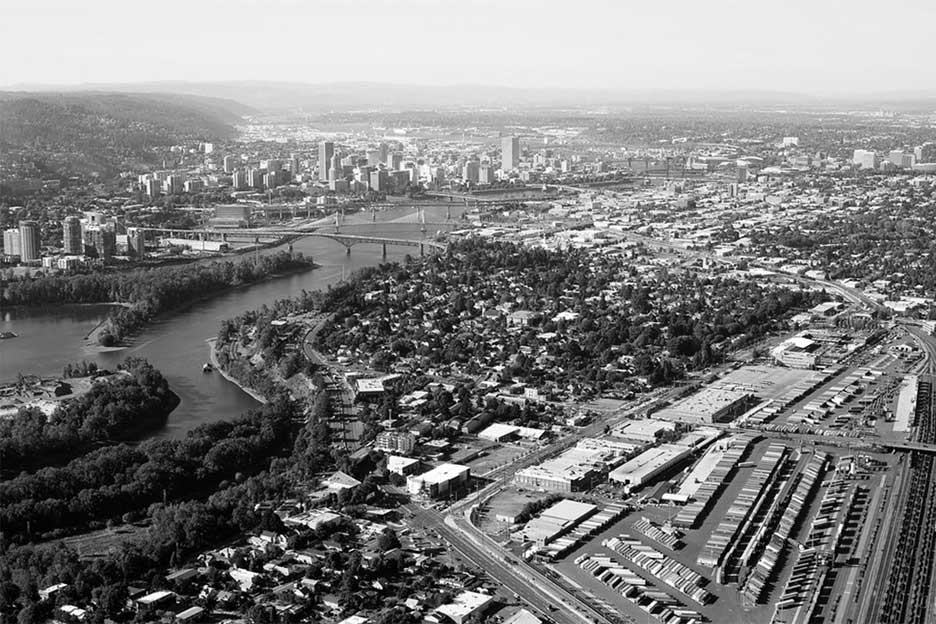In 2020, Portland, Oregon experienced two unprecedented shocks to its food system. Early in the year, the COVID-19 pandemic showed the city just how easily its food supply chains could be disrupted by a crisis. Then, in the fall, the devastating Labor Day Wildfires left Portland with tens of thousands of displaced residents in need of emergency food.
In the wake of the crises, the organization whose job it is to ensure disaster resilience in the Portland Metro region – the Regional Disaster Preparedness Organization (RDPO) – suspected the food system was underprepared for the next disaster.
But RDPO had also seen many new local groups stepping up in 2020 to help feed people as well as new initiatives launching to take on food system resilience, including initiatives from several nonprofits involved in Portland’s thriving local food movement. The situation left the organization with questions. With so many stakeholders in Portland’s food space, where exactly are the gaps in emergency food planning? Which neighborhoods and communities are most in need? Then, does emergency food planning need to be coordinated? And, if so, what role should RDPO play?
In short, the organization knew it needed to better understand who else in the region was planning for food system resilience, and what those groups were doing. It enlisted the Feeding Cities Group (FCG) to help.
“RDPO would like to step up to lead on food resilience issues in the Portland-Vancouver (Washington) region,” said RDPO Senior Planning Coordinator, Carol Chang. “[However], we want to ensure that we understand, honor, and convene the work already being done so that we take the most equitable path forward.”
An equitable approach to emergency food planning
As Portland Metro’s designated planning coordinator on disaster preparedness, RDPO already collaborates with dozens of county and municipal governments, non-governmental organizations (NGOs), and private sector entities who “recognize that they can more effectively respond to disasters and facilitate recovery if they prepare together,” says RDPO’s website. Moreover, it has recently set new goals aimed at making emergency planning and funding across the region more equitable and inclusive.
Its collaborative approach to planning is a principal reason why RDPO chose to work with FCG – which likewise centers collaboration, equity, and local, community control in emergency food planning. In addition, FCG has a deep understanding of both food systems and how cities work, which they used to develop a framework for efficiently analyzing urban food systems. This meant the team could quickly make sense of the somewhat overwhelming food space in Portland, home in on the key stakeholders, and answer RDPO’s questions: Who else is out there, what are they doing, and could they be an important partner in the future?
FCG’s Regional Food System Resilience Scoping Study, completed in 2021, has now provided answers to those questions, while also verifying the need for more research, coordination, and planning towards food system resilience. For example, one important RDPO partner is the Oregon Food Bank, whose network provides food to more than 1,400 sites throughout Oregon and southwest Washington. During the pandemic, the food bank was able to keep 95% of its sites open and operational, said Oregon Food Bank CEO, Susannah Morgan, thanks, in part, to strong coordination with its own partners. But Morgan also noted that more planning will likely be needed in the future to prepare for other types of hazards, such as wildfires and major flooding events, that cause infrastructure damage or disruption.
Another important partner for RDPO is the Oregon Department of Human Services (ODHS) – specifically its Resilience and Emergency Management (OREM) department. Prior to Oregon’s wildfire season in 2020, OREM had just over one full-time employee on staff. Since then, however, it has greatly expanded its capacity, with roughly 75 people involved today in the department. Working with public and private-sector organizations across Oregon, OREM is now planning a response to the Cascadia earthquake, and was deeply engaged in providing food during the wildfires. The department also actively collaborates with the Oregon Food Bank and FEMA Region 10, which serves Alaska, Idaho, Oregon, and Washington.
Again, though, during an interview with FCG, a department leader stated that “more needs to be done on the local and regional level” while expressing enthusiasm for RDPO research into food system vulnerabilities in the future.
The biggest finding: Lack of ownership
While identifying these partners was a crucial step toward better emergency food preparedness in the Portland Metropolitan Region, most important is what FCG didn’t find: Clear ownership of the problem of food system vulnerability.
In other words, none of the organizations working on food preparedness in the Portland area – not RDPO or the food bank system or ODHS or a local nonprofit – is singularly responsible for ensuring the food system’s resilience. Even FEMA, which might seem like a logical choice for a leader, is not in charge, particularly now when the agency is stretched thin by an onslaught of crises.
Put a third way, of all the gaps in emergency food preparedness that the Portland Metro region hopes to fill, the biggest one of all is the lack of a leader. And that makes it very difficult for the region to fully prepare for landslides, floods, wildfires, and other hazards that threaten food access.
“We always say we need a plan,” said Morgan of the Oregon Food Bank, but “it’s more important to have a person [whose job it is to handle that issue at hand].”
The Portland Metro region is hardly alone in this. Read more about the lack of emergency food response ownership issues that FCG has uncovered in other cities in our Critical Vulnerabilities blog.

